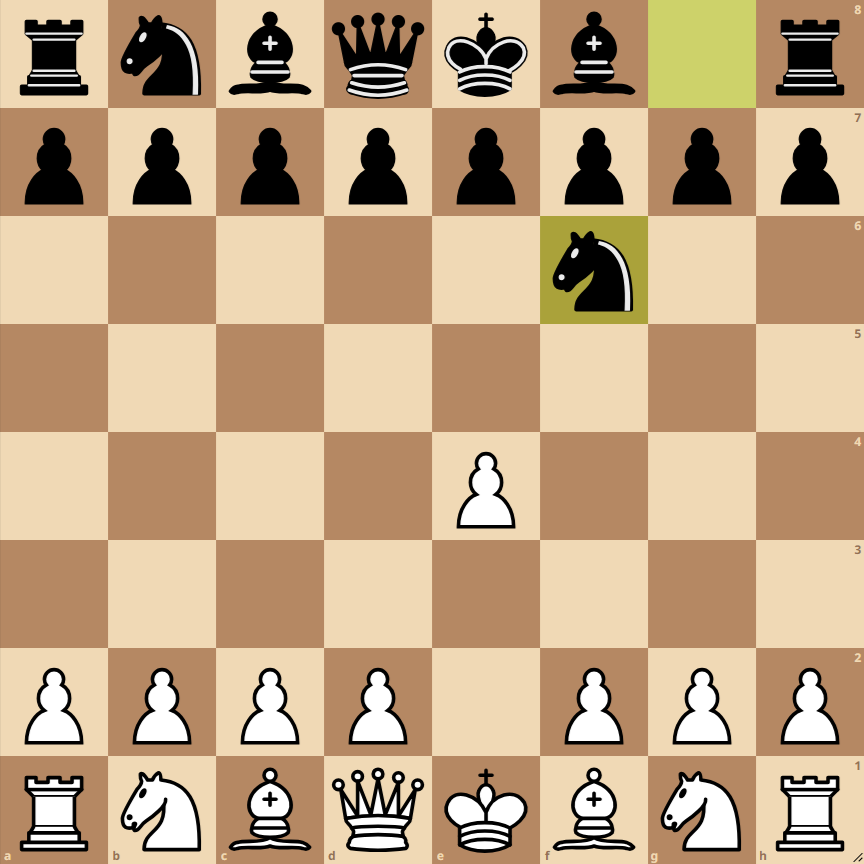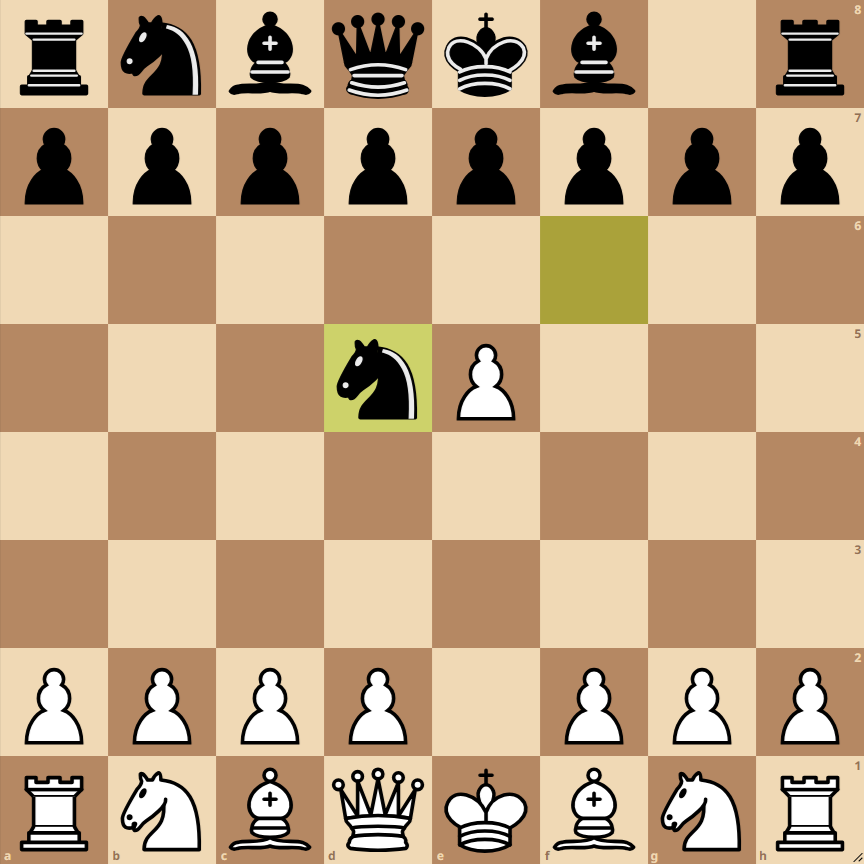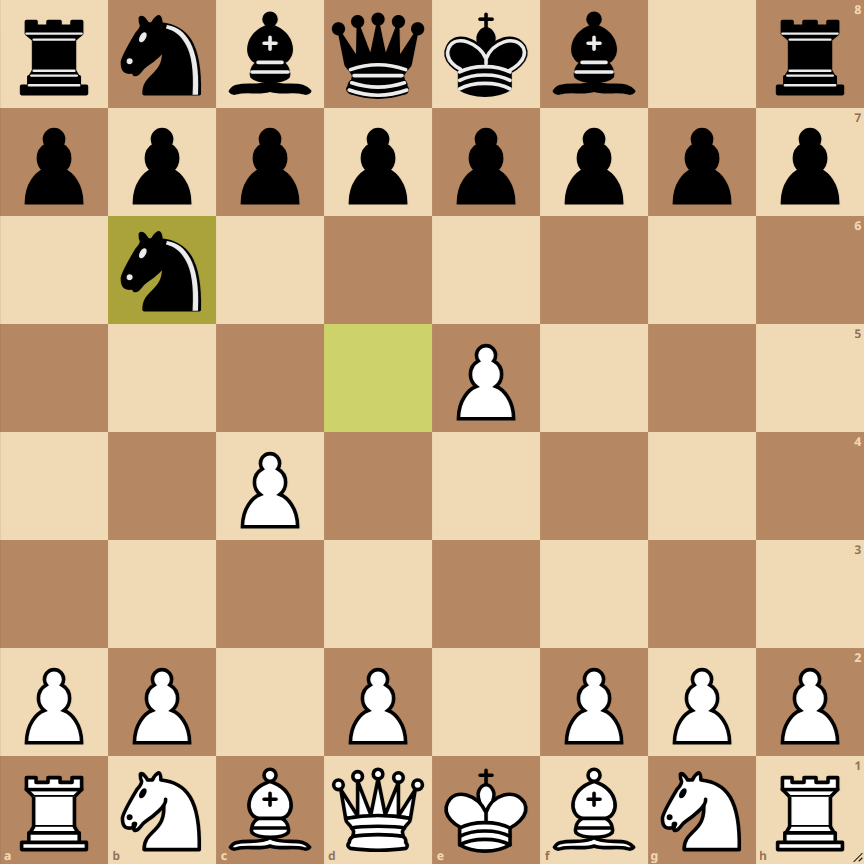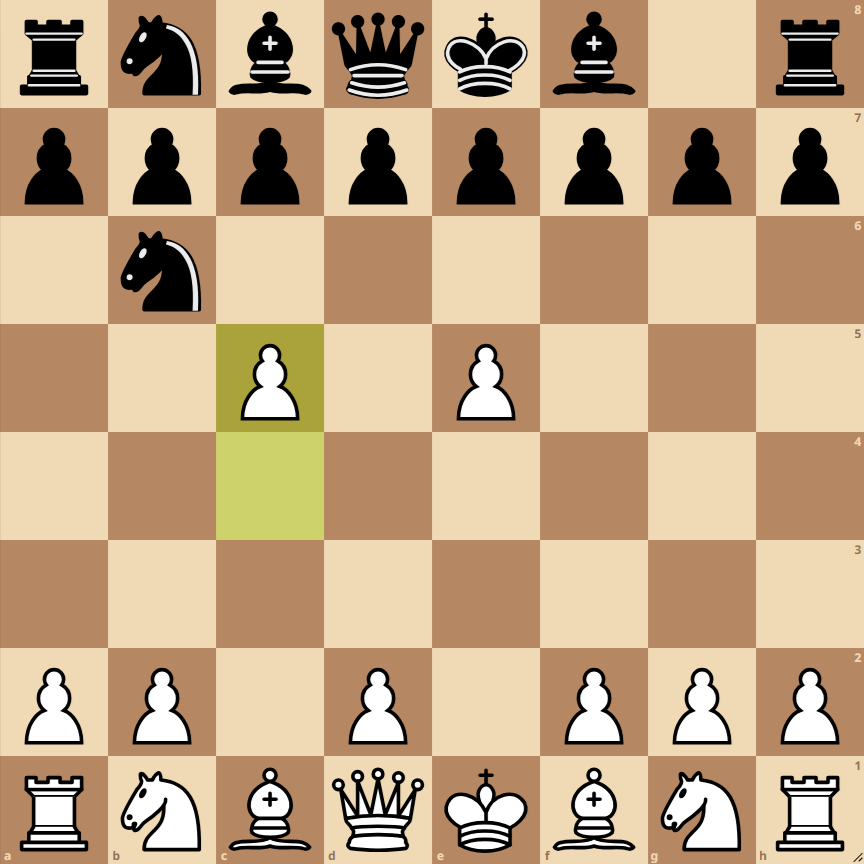How to Play the Alekhine Defense: Two Pawns Attack, Lasker Variation



- 1. e4: White opens the game with the king’s pawn, controlling the center and preparing the development of the bishop and queen.
- 1… Nf6: Black responds with the Alekhine Defense, challenging the e4 pawn and aiming to disrupt White’s central pawn structure.
- 2. e5: White advances their pawn, attacking the knight on f6 and gaining central space.
- 2… Nd5: The black knight retreats to d5, a strong central square, maintaining pressure on the center.
- 3. c4: White advances their queen’s pawn, seeking to control more central space and prepare the development of their minor pieces.
- 3… Nc7: The black knight relocates to c7, a safer position from where it can continue its play.
- 4. c5: White advances their queen’s pawn further, aiming to displace the black knight and gain space on the queen’s side.
Variations of the Alekhine Defense: Two Pawns Attack, Lasker Variation
4… Nd5
One option for Black is to reposition the knight to d5, maintaining pressure in the center and preparing the development of other pieces.
4… d6
Another possibility is to play 4…d6, aiming to challenge the white pawn on c5 and open lines for Black’s pieces.
Alekhine Opening, Two Pawns Attack, Lasker Variation
In the Alekhine Opening, Two Pawns Attack, Lasker Variation, White aims to establish dominance in the center of the board with their pawns, while Black seeks to counter this strategy with knight moves and flexible play. The position after 1.e4 Nf6 2.e5 Nd5 3.c4 Nc7 4.c5 is critical and defines the nature of the game.
Strategy for White:
- Space and Center: With 1.e4 and 2.e5, followed by 3.c4 and 4.c5, White aims to gain central space and restrict Black’s options. This approach intends to limit the mobility of Black’s pieces, especially their knights.
- Development and Preparation for Attack: White must develop their minor pieces (bishop and knight) quickly. The bishop on c4 can be an excellent choice, targeting Black’s kingside. Maintaining options for a short castling is also crucial for White’s king’s safety.
- Long-term Play: In the long term, White can consider advancing on the queenside, where they have gained space. Pawn maneuvers on a and b, or even a d4 push, can be considered to open lines and diagonals for their pieces.
Strategy for Black:
- Counterattack and Flexibility: Through knight moves, Black aims to challenge White’s control of the center and create counterplay. Moves like …Nd5, …d6, or …e6 are key in this aspect.
- Development and Rook Connection: It’s vital for Black to develop their minor pieces and connect their rooks. The g7 bishop, after a …g6, can be a good defensive and offensive piece. Castling is also an important consideration for the safety of the Black king.
- Play in the Center and Kingside: With …d6, Black can aim to open the center and activate their pieces. This can lead to tactical possibilities and destabilize White’s pawn structure. On the other hand, …e6 aims to undermine White’s central pawn structure and free the dark-squared bishop.
Next Best Moves:
For White: Nc3, developing another piece and supporting the center, or d4, aiming to open the center and increase pressure.
For Black: …d6, challenging the White pawn chain; …e6, aiming to create tension in the center; or …Nd5, relocating the knight to a more active position and preparing for further development of the bishop and castling.
In conclusion, this variation of the Alekhine Defense offers dynamic and tactical play, with opportunities and challenges for both players. White enjoys more space, while Black seeks to destabilize the central structure and exploit potential weaknesses in White’s position. The choice of a plan and tactical precision will be crucial in the development of the game.
I have preserved the appropriate HTML tags, including
,
,
,
- , and
- ,
- , and

